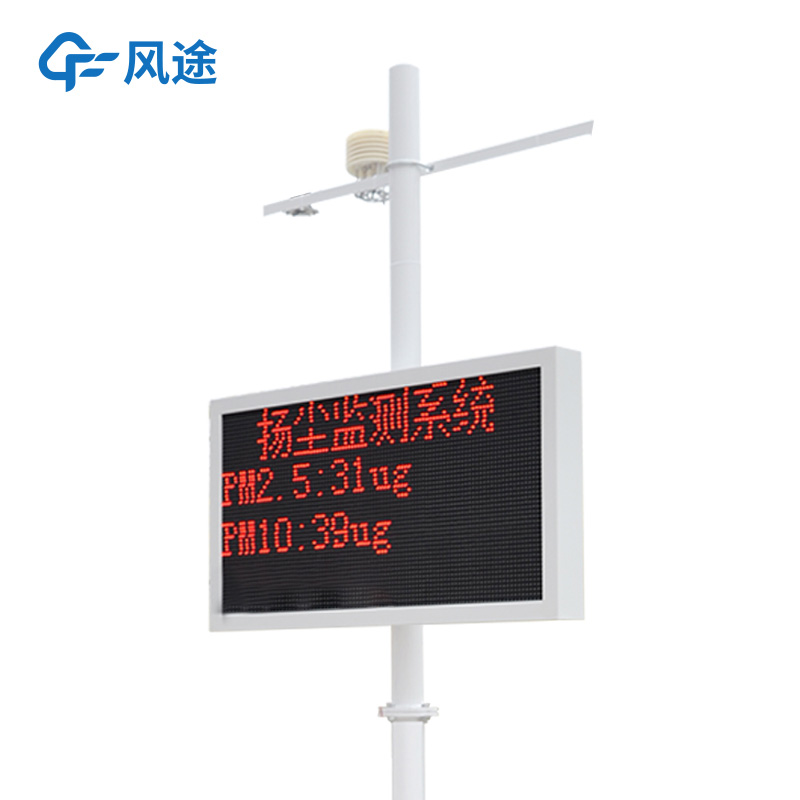Tianqiong Sensor IOT Technology Co., Ltd
Sales Manager:Ms. Emily Wang
Cel,Whatsapp,Wechat:+86 15898932201
Email:info@fengtutec.com
Add:No. 155 Optoelectronic Industry Accelerator, Gaoxin District, Weifang, Shandong, China

Sales Manager:Ms. Emily Wang
Cel,Whatsapp,Wechat:+86 15898932201
Email:info@fengtutec.com
Add:No. 155 Optoelectronic Industry Accelerator, Gaoxin District, Weifang, Shandong, China
time:2025-06-26 09:11:54 source:Weather Station viewed:249 time
In the process of urban construction and development, dust and noise pollution have increasingly become prominent issues affecting environmental quality and residents' quality of life. The Online Dust Monitoring System, with its intelligent supervision and intelligent dust suppression functions, is bringing new changes to environmental regulatory work.
The System's Technical Framework and Monitoring Capabilities
The system builds an all-around monitoring network based on core technologies such as light scattering and micro-electromechanical systems (MEMS). For concentrations of various particulates like PM2.5, PM10, and TSP, the system uses laser dust sensors to precisely calculate the quantity and mass concentration of particulates by measuring the intensity of scattered light generated when laser irradiates particulates in the air. It also conducts 24-hour uninterrupted monitoring of meteorological parameters including noise decibel values, temperature, humidity, wind speed, wind direction, and atmospheric pressure. Sensors collect analog signals, which are converted into digital signals by a data collector for preliminary analysis, and then uploaded to the cloud environmental monitoring platform in real time and stably via wireless communication technologies such as 4G and GPRS.
Core Advantage: Intelligent Supervision
The cloud platform, the core of intelligent supervision, features powerful data processing capabilities to store and deeply analyze massive monitoring data, presenting them visually in the form of intuitive charts, maps, etc. After logging in, managers can not only view detailed data of each monitoring point in real time but also analyze the laws and trends of pollution through historical data comparison. When monitoring data exceed the preset environmental protection standard thresholds, the system immediately sends alarms to relevant personnel via text messages, platform pop-ups, etc., while automatically capturing on-site pictures or videos to retain law enforcement evidence. The platform sets different permission management levels, allowing front-line inspectors to management personnel to obtain data as needed, enabling three-dimensional supervision of construction sites, factories, mines, and other venues.
Intelligent Dust Suppression: Linkage with Spraying Systems
The system links with a spraying linkage controller. Once dust concentration exceeds the standard, the controller quickly activates dust suppression equipment such as fog cannons, 围挡喷淋 (enclosure sprinklers), and automatic spraying systems. Fog cannons atomize water into tiny particles through high pressure, which combine with airborne dust to settle; enclosure sprinklers form a water curtain around construction sites to block dust diffusion; the automatic spraying system can automatically adjust the spraying range, intensity, and duration according to on-site dust conditions. Users can also remotely view equipment operating status via the cloud server and flexibly set linkage strategies to achieve unattended and efficient dust suppression management.
Application Scenarios
Currently, the system is widely used in construction sites, garbage dumps, demolition sites, factories, and other places. In construction sites, it helps construction units implement dust prevention measures; in industrial zones, it effectively controls dust and noise emissions during production, providing real-time, accurate, and comprehensive law enforcement evidence.

Soil moisture automatic measurement relies on multiple sensor technologies. For soil water content measurement, Frequency Domain Reflectometry (FDR) and Time Domain Reflectometry (TDR) are commonly used. FDR sensors calculate water content by measuring the soil's dielectric constant, as there is...
Currently, the situation of urban atmospheric pollution is becoming increasingly complex, and traditional methods for monitoring atmospheric pollution sources are facing numerous challenges. The existing national control monitoring system for ambient air has problems such as a small number of monito...
The Anemometer for Drones FT-F1 is specially designed for low-altitude wind measurement by unmanned aerial vehicles (UAVs). With high precision, stability, and efficiency, it provides accurate data for meteorological research, agricultural and forestry monitoring, environmental surveying, and other...
Soil temperature and moisture are key factors influencing crop growth and ecological environment changes. Accurate detection of these data is of great significance for agricultural production, ecological research, and disaster prevention. Currently, multiple detection methods are available.The soil...